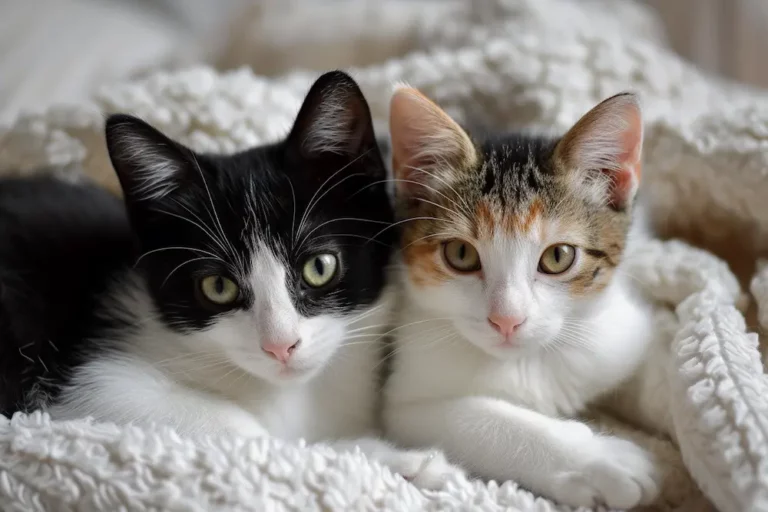TNR or Trap-Euthanize? Exploring the Best Solutions for Feral Cats
When it comes to managing feral
TNR seems incredibly humane, offering a sustainable way to control the population while improving the cats’ health and behavior.
On the other hand, Trap-Euthanize promises immediate results but raises serious ethical concerns.
This dichotomy poses a complex question: Should we prioritize long-term welfare or immediate impact?
As we explore the nuances of both approaches, the answer might not be as straightforward as it appears.
Overview of Trap-Neuter-Return
Trap-Neuter-Return (TNR) is a humane method to manage and reduce the population of feral cats.
I’ve seen firsthand how this approach works to stabilize
Here’s how it goes: Volunteers trap feral cats using humane traps, then take them to a veterinarian for spaying or neutering.
After surgery, the cats are vaccinated and sometimes treated for minor medical issues.
Once they’ve recovered, they’re returned to their original locations.
TNR prevents more kittens from being born, gradually decreasing the population over time.
It also improves the cats’ overall health and reduces behaviors like fighting and yowling.
By investing in TNR, we can create a more harmonious coexistence between feral cats and our communities.
Overview of Trap-Euthanize
While TNR focuses on humane population control, trap-euthanize takes a different approach to managing feral
In this method, cats are trapped and then euthanized to reduce their numbers.
Advocates argue that it quickly lowers the population and potentially reduces wildlife predation by feral cats.
This method is often controversial, as it raises ethical questions about the value of animal life versus the benefits of immediate population control.
Benefits of TNR Programs
One of the major benefits of TNR programs is that they provide a humane way to control the feral
By trapping, neutering, and returning cats to their original locations, TNR programs prevent the birth of new litters, which helps stabilize and gradually reduce the feral
Neutering also reduces behaviors like fighting and spraying, making the cats less of a nuisance to the community.
Additionally, vaccinated and neutered cats are healthier, facing fewer health issues and living longer lives.
As a result, TNR programs create a better environment for both the cats and the people living around them, promoting coexistence and compassion.
Downsides of TNR Programs
Despite the evident benefits TNR programs offer, they also come with certain downsides that can’t be ignored.
One major issue is the ongoing care required for the
Feeding, monitoring, and providing medical care can be time-consuming and very costly.
Additionally, not all cats can be trapped and neutered, leading to continued reproduction.
This limits the program’s effectiveness in controlling the population.
Another concern is the potential impact on local wildlife. Free-roaming cats may hunt birds and small animals, disrupting ecosystems.
Benefits of Trap-Euthanize
Trap-euthanize programs offer a more immediate solution to reducing feral
By humanely euthanizing feral cats, we can swiftly decrease the number of animals suffering from disease, starvation, and injury.
This method helps prevent the spread of zoonotic diseases, which can affect both animals and humans.
Additionally, reducing the number of feral cats can protect local wildlife, such as birds and small mammals, from predation.
Implementing a trap-euthanize strategy can also alleviate the burden on community resources, including animal shelters and rescue organizations, by lowering the number of cats that need care.
Downsides of Trap-Euthanize
Additionally, trap-euthanize programs might seem effective, but they raise ethical concerns and can face strong opposition from animal rights advocates.
I’ve noticed that these programs often create a divide within communities, leading to heated debates and fractured relationships.
Furthermore, trap-euthanize doesn’t address the root cause of overpopulation; new cats will eventually move into the area, starting the cycle anew.
This method also tends to be more costly in the long run, as continuous trapping and euthanizing require ongoing funding and resources.
In addition, many community members find the process distressing, causing emotional strain.
It’s clear to me that while trap-euthanize might offer a quick fix, it’s not a sustainable or compassionate long-term solution for managing feral
Ethical Considerations
Ethical considerations play an essential role in evaluating the methods we use for managing feral
When I think about TNR, I see it as a humane approach, allowing cats to live out their lives without contributing to the population problem.
On the other hand, Trap-Euthanize involves ending lives, which raises serious moral questions. Is it right to end a life simply because it’s inconvenient?
For me, the respectful treatment of animals is paramount.
By choosing TNR, we prioritize compassion and long-term solutions.
It’s not just about numbers; it’s about valuing life.
We should aim for methods that reflect our highest ethical standards, promoting coexistence and respect for all living beings.
Conclusion
After weighing the benefits and downsides of both Trap-Neuter-Return and Trap-Euthanize, I believe TNR is the more humane and effective option for managing feral
TNR not only stabilizes the population but also improves the health and behavior of the cats.
While Trap-Euthanize may offer immediate results, it raises significant ethical concerns.
By choosing TNR, we can create a more compassionate and sustainable solution for feral cats and our communities.






